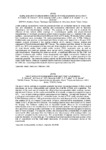Por favor, use este identificador para citar o enlazar este ítem:
http://www.alice.cnptia.embrapa.br/alice/handle/doc/661993Registro completo de metadatos
| Campo DC | Valor | Lengua/Idioma |
|---|---|---|
| dc.contributor.author | GIGNARD, Q. | pt_BR |
| dc.contributor.author | FREIRE JUNIOR, M. | pt_BR |
| dc.contributor.author | DUCAMP-COLLIN, M. N. | pt_BR |
| dc.contributor.author | FREITAS, S. P. | pt_BR |
| dc.contributor.author | SOARES, A. G. | pt_BR |
| dc.date.accessioned | 2012-11-30T00:00:37Z | - |
| dc.date.available | 2012-11-30T00:00:37Z | - |
| dc.date.created | 2010-03-22 | pt_BR |
| dc.date.issued | 2009 | pt_BR |
| dc.identifier.citation | In: EUROPEAN FEDERATION OF FOOD SCIENCE AND TECHNOLOGY CONFERENCE, 2009, Budapest. New challenges in food preservation: processing: safety: sustainability. Wageningen: EFFoST, 2009. 1 CD-ROM. Ref. P273. | pt_BR |
| dc.identifier.uri | http://www.alice.cnptia.embrapa.br/alice/handle/doc/661993 | pt_BR |
| dc.description | The use of edible coatings in vegetable products has been increasing because it offers several advantages as being biodegradable and extends the shelf-life of fruits and vegetables. The objective of this work was to evaluate the effect of two biodegradable edible coatings, sodiumalginate and Chitosan, on the quality and shelf life of minimally processed pineapple storage at 10°C. Five L of each coating solutions were prepared as following - 2% alginate solution: 100 g of Algenic acid sodium salt in 5 L of distilled water, heated at 70°C under constant stirring - 0,75% Chitosan solution: 150 g of monohydrated citric acid dispersed in 5 L of distilled water and addition 37.5g of Chitosan (Crab shells Chitosan, minimum 85% deacetylated, SIGMA), heated to 60°C to dissolve the Chitosan. The coating solutions were then stored at 5°C before the dipping. The Chitosan coating had an important benefic effect on the microbiological contamination and on the maintenance of the total phenolic content. The high concentration of citric acid in the coating solution contributed to the antimicrobial effect but changed the sensory taste of fresh pineapple. The alginate coating also decreased the contamination of yeasts and molds but its effect was lower than the Chitosan one. Visual aspect of its coating solution can be not well accepted by the consumers. The concentration of alginate must be decreased to avoid the formation of a too thick gel. The Chitosan treatment resulted in the best product at the end of experiment and the most slight decreasing of phenolic compounds during all the experiments. | pt_BR |
| dc.language.iso | eng | eng |
| dc.rights | openAccess | eng |
| dc.subject | Alginato | pt_BR |
| dc.subject | Filme comestível | pt_BR |
| dc.subject | Filme biodegradável | pt_BR |
| dc.subject | Quitosana | pt_BR |
| dc.title | Use of edible and biodegradable coatings in fresh cut pineapple. | pt_BR |
| dc.type | Resumo em anais e proceedings | pt_BR |
| dc.date.updated | 2012-11-30T00:00:37Z | pt_BR |
| dc.subject.thesagro | Abacaxi | pt_BR |
| dc.subject.thesagro | Vida de Prateleira | pt_BR |
| riaa.ainfo.id | 661993 | pt_BR |
| riaa.ainfo.lastupdate | 2012-11-29 | pt_BR |
| dc.contributor.institution | Q. GIGNARD, ENSIA; MURILLO FREIRE JUNIOR, CTAA; M. N. DUCAMP-COLLIN, CIRAD; SUELY PEREIRA FREITAS, UFRJ; ANTONIO GOMES SOARES, CTAA. | pt_BR |
| Aparece en las colecciones: | Resumo em anais de congresso (CTAA)  | |
Ficheros en este ítem:
| Fichero | Descripción | Tamaño | Formato | |
|---|---|---|---|---|
| 2009229.pdf | 115.02 kB | Adobe PDF |  Visualizar/Abrir |









